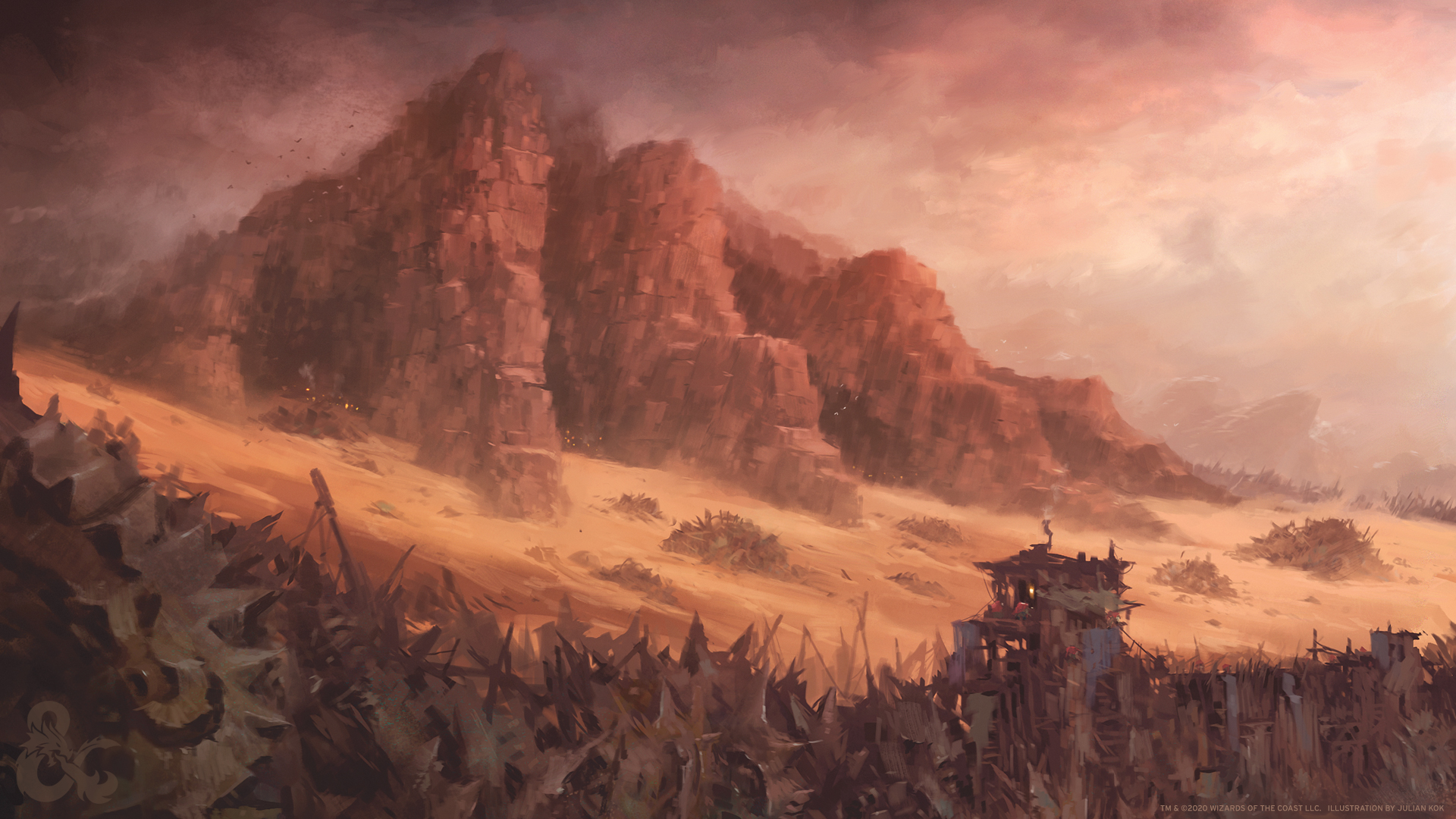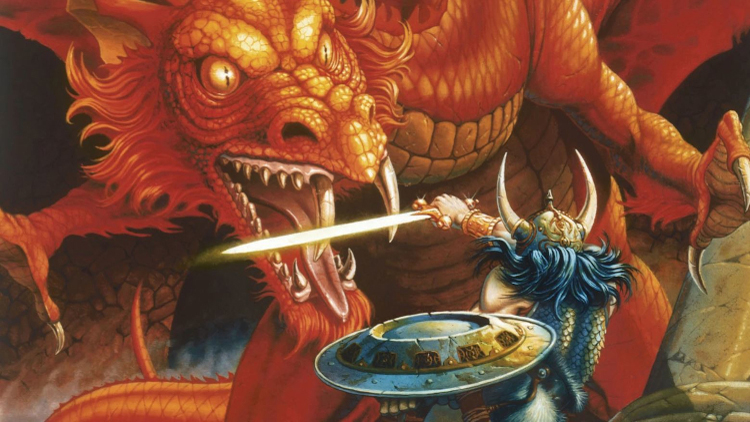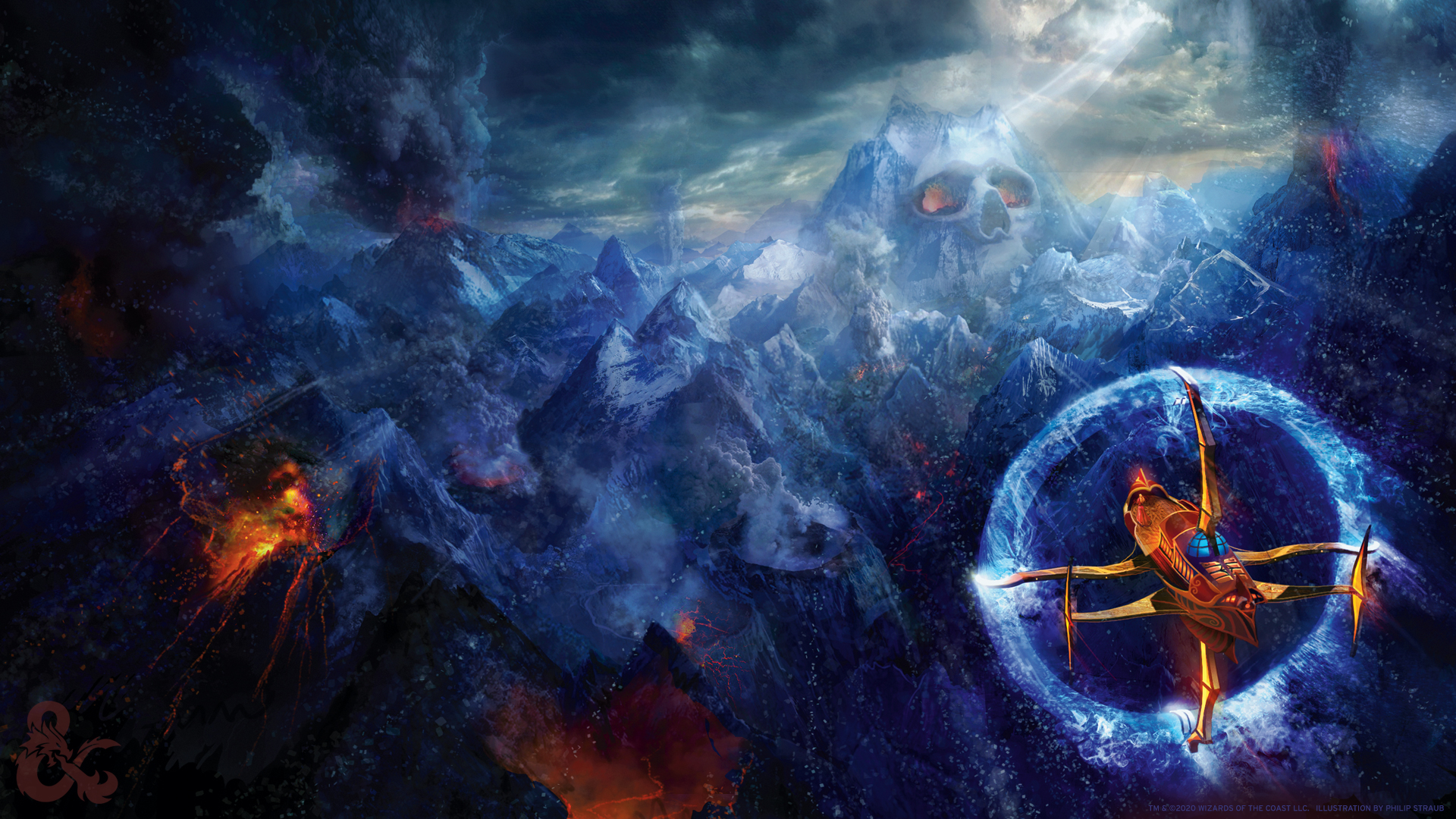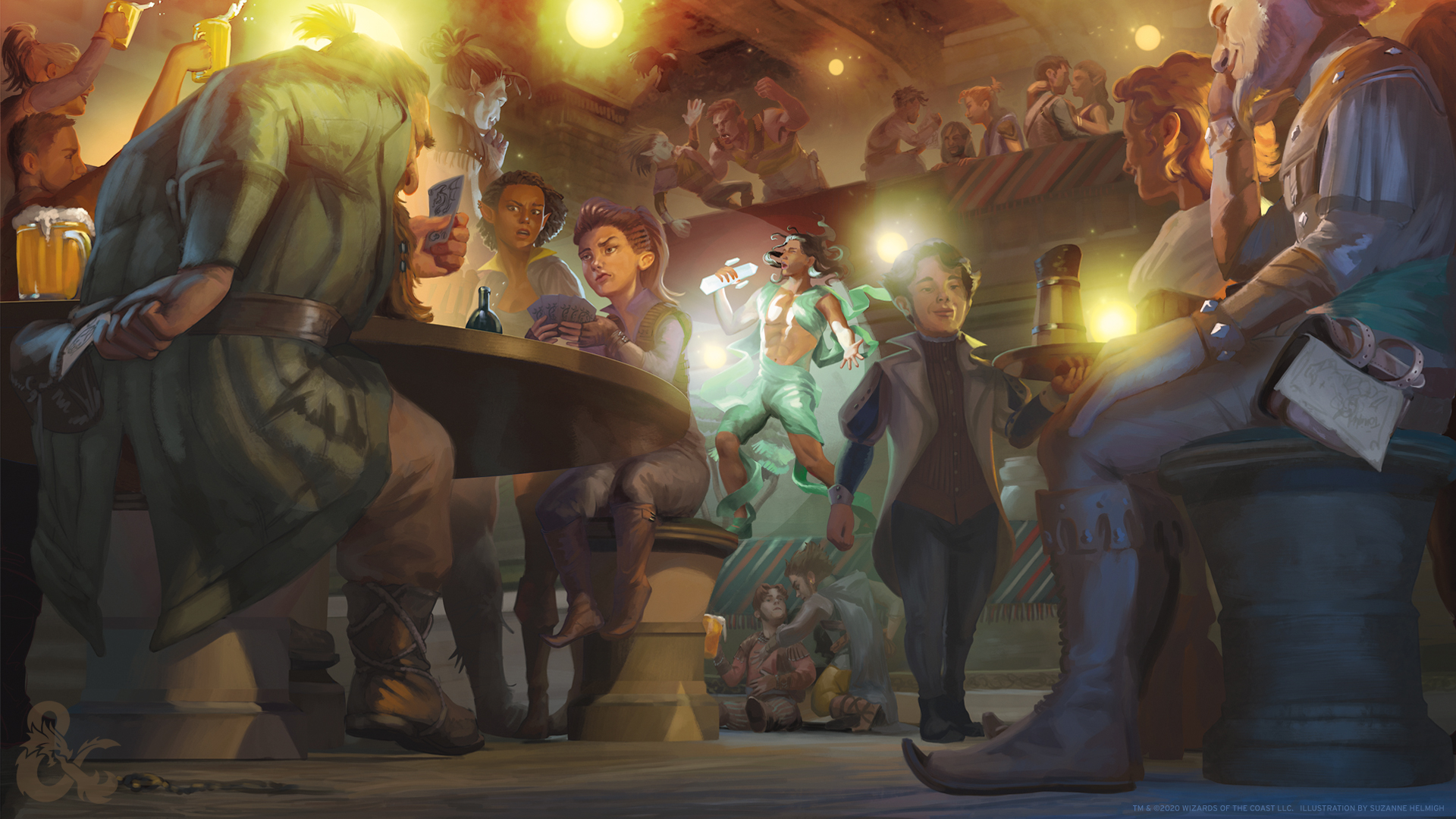Dungeons and Dragons, or D&D, has grown from a complicated game played in musty basements to a worldwide phenomenon. Thanks to shows like Stranger Things and Big Bang Theory, the world of D&D has been introduced to more people than ever before – while the rise of podcasts and web series like Critical Role and Acquisitions Incorporated, where people play D&D online for everyone to watch, the latest 5th Edition of the game (known as '5E') has attracted a wider audience far beyond your typical nerds.
D&D is all about imagination. It’s a system that allows you and your friends to tell a story together, and it can be any story you want it to be. As someone who's been playing for years, I often have friends and family ask me to explain what this strange fantasy game is all about – and why I’m so addicted to buying new dice.
But, every time I try and tell them of the fantastical stories I’ve been a part of – defeating an ancient blue dragon with the help of the King of the Giants or traveling to the Feywild to stop the spread of a strange disease that been plaguing the forest – their eyes glaze over and they nod along politely. Because these stories and every D&D story happens inside the minds of the people sitting at the table – and, to an outsider, it all just seems a bit strange.
To get the real experience, you need to grab a character sheet and some dice, and try out the game first-hand. That’s where we come in: this guide to D&D races, classes and dice will run you through the most important points to keep in mind, with an explanation of how the underlying game mechanics work.
- How to play D&D online – and actually have fun
Playing the game

Let’s break down the game into something easy to understand for beginners. There are three main aspects to a game of D&D: combat, exploration, and roleplay. Different games will feature different balances of these depending on how the people like to play.
Combat
Throughout the game, you’ll come up against monsters, bandits, and bad guys, and sometimes talking just won’t fix it. You’ll have to defeat them in combat. This is when the Fighters will dart forward, sword and shield in hand, the Wizards will throw out magic spells from a distance, and the Clerics will be on hand to keep you all healed and alive. Combat in D&D is turn-based, so everyone will have their chance to make a move, led by the Dungeon Master that runs the session.
Exploration
Every D&D game is set in a different world. You may be playing a game in one of the ‘official’ D&D worlds, or your game might be set somewhere your DM has invented themselves. Either way, there is plenty for you to go and explore, from sunken ships and haunted castles to deserted villages and monster-ridden mountaintops.
Roleplay
In D&D, you play as a fantasy character. Roleplay is when your character interacts with others in the world. There are different ways to roleplay, so don’t be put off if this sounds daunting! You can go all-in with an accent or different voice, speaking as if you were the character. Or, you can describe what your character does: “Ulfgar goes up to the barmaid and orders drinks for the party”.

D&D races: elves, humans, halflings, and more
If you’ve ever seen Lord of the Rings then these fantasy race options will seem very familiar to you – especially the hobbits (we mean, uh, halflings).
In the PHB (Player’s Handbook) there are nine races to choose from. Each race comes with its own racial traits and abilities as well as a few subraces which offer even more variety.
For example, Elves can live for up to 750 years, can see in the dark, and thanks to their magical heritage, they can’t be charmed by magic or put to sleep. Wood Elves are faster and stealthier, and High Elves are more adept with magic. Compare them with Dwarves who only live to about 350 years old, also have darkvision, but they are resistant to poisons thanks to their sturdy physique, but because they are smaller in size, they also have less speed (we all remember Gimli running trying to keep up with Legolas, right?).
Already you can see the wealth of options available when creating your first character. Here’s a quick look at all the different races in the Player's Handbook, (which you can read more about in the free Basic Rules on D&D Beyond):
- Dwarf - sturdy warriors, resistant to poison, good Fighters/ Barbarians
- Elf - graceful and long-lived, resistant to charm, immune to sleep, good Rogues/ Rangers
- Halfling - small and speedy, lucky, good Rogues/ Rangers
- Human - versatile people, lots of customization options, good for any class
- Dragonborn -have dragon blood of some kind, can breathe fire (or ice, acid, or lightning), good Paladins
- Gnome - cunning inventors, good at resisting magic, good Wizards
- Half-Elf - Elven grace with human versatility, gain extra skills, good Bards/ Sorcerers/ Warlocks
- Half-Orc - fierce and intimidating warriors, hard to knock down, good Barbarians/ Fighters
- Tiefling - demonic heritage, fire resistance, good Bards
Of course, these are just the basic races. In other published 5th edition books, the list of playable races is extended to include monstrous races like Goblins and Orcs, to more exotic races such as the cat-like Tabaxi, or even the elephant-like Loxodon, and even include beings from other worlds like the angel-blood Aasimar, and half-horse / half-person Centaurs.
There is something of a reckoning happening for D&D's racial traits, with increasing scrutiny on the underlying assumptions driving portrayals of 'evil' races especially.
The 2020 D&D sourcebook Tasha's Cauldron of Everything did see designated racial traits become optional, encouraging players to pick and choose stat bonuses as appropriate for their character, showing a more inclusive attitude from publisher Wizards of the Coast – so be conscious that you don't need to fall into stereotypes of a brutish, high-strength orc or graceful, high-dexterity elf.

D&D classes: sword, sorcery, or both?
Once you’ve decided what race your character is, it’s time to choose a class. In D&D your class determines what kind of things you can do and ultimately what role you’ll play in the group. If you play any kind of online game, it’s basically how you decide who will be the tank, the support, the healer, or the DPS (high damage dealer). Some classes use magic, some use weapons, and some use a mixture of both.
As a new player, it will be easier to understand the mechanics of martial classes and mixed classes (so-called half-casters or third-casters, with limited magical capabilities), but that doesn’t mean you can’t dive headfirst into some magic-based shenanigans.
Martial Classes
- Barbarian (Tank) A primal fighter that uses their anger to fuel powerful attacks and resist damage.
- Fighter (Tank) A trained and practiced warrior with superior techniques and mastery of a range of weapons.
- Monk (DPS) Master of martial arts who can channel their ki to empower their attacks.
- Rogue (DPS) As stealthy as they come, Rogues can sneak up on enemies and pick locks with ease.
Mixed Classes
- Paladin (Tank, Support, Healing) A holy warrior who can channel divine energy to strengthen their attacks and their friends.
- Ranger (DPS, Support, Healing) Knows everything about their favored terrain, and can hone their skills on specific enemies.
Magic Classes
- Cleric (Healing, Support) A chosen acolyte of the Gods with the divine power to heal who packs some seriously powerful magic.
- Bard (Support, DPS) A performer that can channel magic into their words, songs, or music with a wide range of spells.
- Sorcerer (DPS, Support) Born with innate magic that can be as unpredictable as they are, but really packs a punch.
- Warlock (DPS, Support) Someone who made a pact with a powerful entity in return for powers and a whole host of magical abilities.
- Wizard (DPS, Support) Someone who spends their time reading and researching to learn as much magic as they can.
- Druid (Healing, DPS, Tank) At one with nature with powerful magic that can both hurt and heal and can transform into different creatures.

D&D subclasses: how to specialize
Each class also has a number of subclasses that further customize how your abilities work. For clerics, this will depend on what God you worship (there are a lot to choose from!) and what that God’s focus is. You could be a Life Cleric who works hard to heal and inspire those around them, or you could be a Tempest Cleric who calls on the power of the storm to smite their enemies.
For Rogues, you could have trained as an Assassin who is deadly when they get the jump on their enemies, or you could be an Arcane Trickster who has learned to supplement their stealth with magic. Subclass options come into play at level 3 for most classes (Clerics, Sorcerer, and Warlocks kick off proper at level 1, and Druids level 2) so if you’re starting at level 1, you’ll have a bit of time to play the character and decide what suits you best.
D&D spells: playing as a caster
Magic plays a big part in many DND games, and while it may seem confusing at first glance, with the latest 5th edition of the game (5E), the mechanics have been simplified to make it more beginner-friendly. There are two types of spells you can learn: basic ‘cantrips’ and more complex levelled spells. Cantrips are spells that you know so well and are so familiar with that you can cast them whenever you like, as many times as you like. These tend to be less-powerful but can be incredibly useful.
Then you have levelled spells. Each spell caster will have a certain number of spell slots they can use for these spells (lots for Wizards, not so many for Warlocks). When you’ve used them all, you have to take a rest before you can cast these spells again. The higher the spell slot, the more powerful the spell. These can be a mixture of damage spells like a Fireball thrown into the middle of your enemies, a healing spell to bring someone back to full health, or a control spell that can make your enemy think you’re actually really cool and it doesn’t want to kill you after all.
D&D dice: shiny math rocks
Now, you may have seen strangely-shaped dice used as part of D&D. Although six-sided dice are the most common outside D&D, the game actually makes use of a whole range of polyhedral dice. You’ll often see people say “roll a d20”, 20-sided dice (or d20s) are the most commonly used dice in the game. You use these more than anything else to determine if you can hit someone with your sword, if you’re able to sneak past the guard, or if you’re able to resist the magical charm of that beautiful half-elf bard that’s been suspiciously chatting you up.
You’ll also have the chance to roll d12s, d10s, d8s, d6s, and d4s on a regular basis.
Of course, with new technology, you don’t actually need to use physical dice. For example, D&D Beyond has a built-in dice roller on their character sheets. So, you just click the spell you want to cast, or the weapon you want to attack with, and D&D Beyond will roll the dice for you! You can check out our guide to the best dice roller apps too.
D&D 5e: how to get started
So, you know how the game works, you know what race and class you want to play, and you’re ready to dive into the world of Dungeons and Dragons? Awesome. Trust me, you’re going to love it! Before you get started, you’ll need a few things:
- Character Sheet
- Player’s Handbook
- Dice
- Paper and pencil
- Some imagination
You can set up your character sheet with an online tool like D&D Beyond, and you can also purchase the books from there too. Or, if you buy a physical copy of the Player's Handbook (either from Amazon or your local game store) there will be a blank character sheet at the back you can use. Either way, grab a friend who knows the game, or your Dungeon Master to help you fill it all out, and then you’re ready to go. Roll those dice, explore new worlds, and become the hero you always imagined!
- Check out the best board games out there too
from TechRadar - All the latest technology news https://ift.tt/30nxvlo

